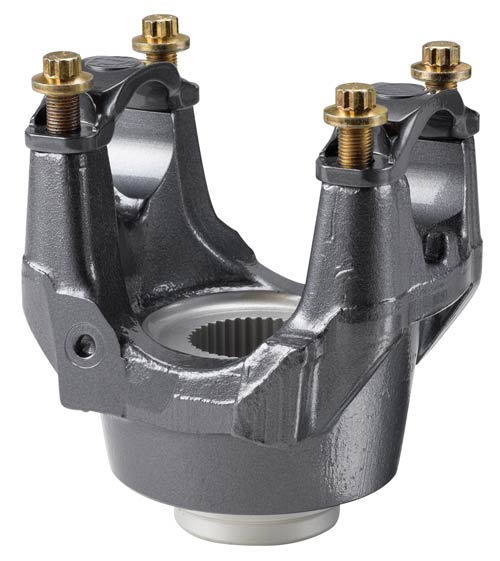Yoke ends are U-shaped fasteners that are designed to secure cables or rods. As previously mentioned, they are commonly used in lifting applications. A cable or rod can be inserted through the opening of a yoke end, after which it can be used to lift an object and Also known as clevis ends.
An end yoke is a mechanical component that is used to connect a driveshaft to a gear or other rotating component in a drivetrain system. It is typically shaped like a fork or a U, with a single arm that is parallel to the ground and spaced apart by a distance that matches the width of the gear or component it is intended to connect to.
The end yoke is typically mounted on the end of the driveshaft and connected to the gear or component through a joint or coupling, such as a universal joint or a slip yoke. It allows for the transfer of torque and rotation between the driveshaft and the gear, while also allowing for some degree of misalignment and movement between the two components.
End yokes may be made of a variety of materials, including steel, aluminum, or other alloys, and may be designed to accommodate different shaft sizes, gear ratios, and other specifications. They may also be equipped with other components such as bearings, seals, and fasteners to ensure proper function and durability.
End yokes are commonly used in automotive, agricultural, and industrial applications, where they play an important role in transmitting power and motion between different components in a drivetrain system. Proper installation and maintenance of end yokes and other drivetrain components is important for ensuring safe and reliable operation of machinery and equipment.


